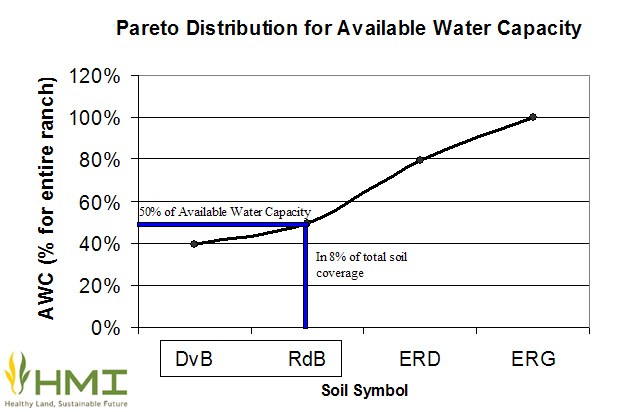The Pareto principle (also known as the 80-20 rule) is a mathematical concept that states for many events roughly 80% of the effects come from 20% of the causes. It was developed by Italian economist Vifredo Pareto, who observed that 80% of the land in Italy was owned by 20% of the population. To state this principle simply in terms of 80-20 is, however, somewhat misleading. The distribution ratio could easily be 90-10, 75-25, or, as well shall see, 50-8. The important point to keep in mind is that this principle is one of unequal distribution, where the analysis is designed to identify key points of intervention to improve management effectiveness.
In my observation of natural landscapes, I have found the Pareto principle to be a useful concept. For whatever reason, natural systems often express unequal distributions, in what certainly seems to be a corollary to the principle of spatial heterogeneity. Learning to view a landscape through the lens of Pareto distributions can help you to optimize your effectiveness as a decision maker.
Moving from the abstract to the specific, I highlight an example from some work HMI did on the West Ranch, a location outside of Ozona Texas that was under HMI's management for about a decade. Characterized by shallow, rocky, upland soils and low-lying, ephemeral riparian draws, the West Ranch offers a classic example of a Pareto distribution in soil types, as 8% of the total soil coverage is of the low-lying type.
HMI used the USDA soil survey data from the West Ranch to calculate three key soil characteristics by soil type: soil organic matter (SOM), soil organic carbon (SOC), and available water capacity (AWC). To conceptualize the dataset, the reader must imagine that the soil behaves at least in three-dimensions. Soil horizons extend well below the soil surface; on the West Ranch, the primary soil types (ERD and ERG) cover the vast majority of the two-dimensional ranch surface, but are steep, shallow, and rocky, with a maximum depth of between 8 and 18 inches. The two low-lying soil types with greater depth (RdB and DvB) cover 1 and 7 percent of the two-dimensional soil surface respectively, but have a maximum depth of up to 80 inches. This, combined with more favorable soil characteristics, has significant ecological and management implications. RdB and DvB, which again only account for 8% of the ranch’s soil surface, account for 49% of the ranch’s total soil organic matter capacity, 49% of the ranch’s total soil organic carbon capacity, and 49% of the ranch’s total available water capacity.
A graphical representation of this distribution is presented below.
Presented in a summary table format, the data is as follows:
Pareto Analysis by Soil Type
This distribution led us to conclude that the potential for brush clearing, improved grass production, and ground water recharge were best served by focusing our attention on these relatively small areas on the landscape. The economic and production implications of this data proved critical in assisting our decision-making, and in designing further areas for research and investigation. Once you begin to view the world through the the lens of a Pareto distribution, you will notice that these disproportionate relationships exist everywhere: 80% of your profit may come from 20% of your product line, 70% of your water may come from 30% of your wells, 90% of your time may be spent on 10% of your land area, etc. While these observations may or may not lead to items of direct action in your decision process, your awareness of these patterns will improve your ability to manage complexity with optimum results.

